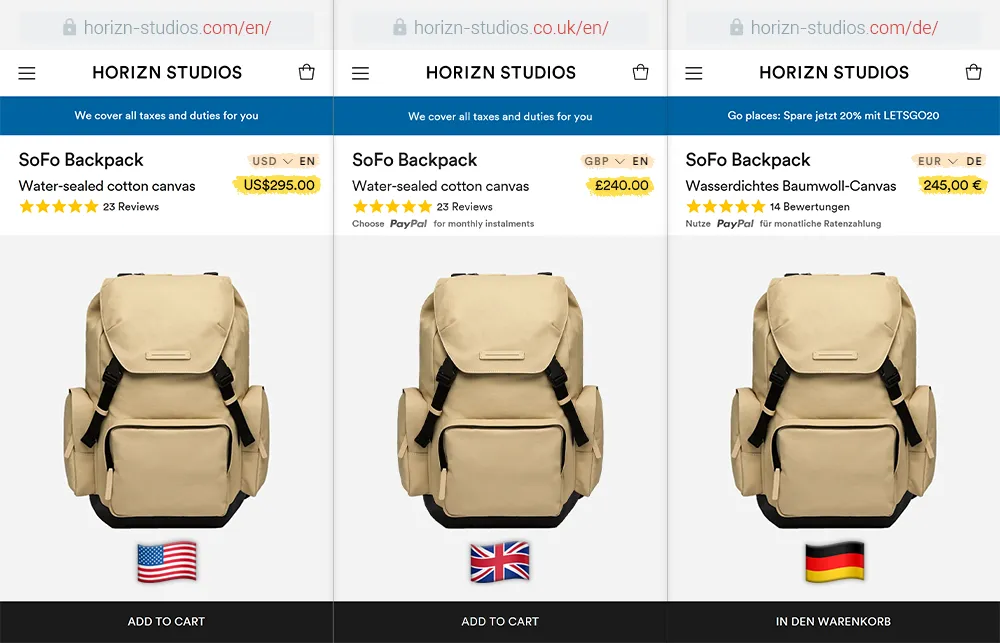Shopify: Multiple stores, One domain - Here's How To Do It

So you’ve got a Shopify store up and running, but now you want another.
Maybe it’s a wholesale channel or expanding into another country, can it be done under a single domain?
Yes, but…
The options are fairly limited. Let me explain.
Can you have multiple Shopify stores under one account?
No.
Creating another Shopify store means it’s entirely separate from the last one. Each one will manually need to be set up, integrated, updated, etc. And paid for, of course.
You can, however, duplicate settings, themes, apps, and customisation by importing and exporting between multiple stores.
And you can also use a single domain.
Why have multiple stores under one domain?
If your stores are extremely similar or identical across different countries, you may want to consider using the same domain.
This can be achieved with subdomains.
For example:
- 🌐 www.yourstore.com
- 🇫🇷 fr.yourstore.com
- 🇩🇪 de.yourstore.com
Or you could have wholesale.yourstore.com for wholesale clients.
This is all under a single domain for branding purposes, but technically they’re all independently managed stores.
Can you use subdirectories instead of subdomains?
No, well, not really.
If you want multiple languages only, it’s possible with translation apps.
LangShop, for example, will add a language selector and subfolder to your store for each language. You can then combine this with a currency selector app such as BEST Currency Converter to show local currencies too.
An example store leveraging this is Horizn Studios.

This has downsides for flexibility though. You’re only translating, therefore there’s no option to allow certain products only in certain locations only as an example.
You also can’t choose the subdirectories, besides languages, you can’t say create a separate store under /wholesale/.
Subdomains vs Subdirectories for SEO
There’s a lot of bad advice saying this is bad for SEO.
Traditionally it was seen as better to use subfolders (i.e. example.com/us/) instead of subdomains (i.e. us.example.com) as it’s treated as the same website rather than a separate one.
The argument being that there’s services such as WordPress.com that give subdomain.wordpress.com away for anyone, therefore they’re regarded as separate websites. This is true in those circumstances, but not the norm.
John Mueller from Google has also said:
“Google websearch is fine with using either subdomains or subdirectories. Making changes to a site’s URL structure tends to take a bit of time to settle down in search so I recommend picking a setup that you can keep for longer.”
John Mueller, Search Advocate at Google
In short, this makes absolutely no difference to SEO. Subdomains are perfectly acceptable.
You can even use multiple domains (e.g. example.fr, example.no, example.dk, etc) and use Hreflang tags for SEO.
The downsides of multiple stores on Shopify
Despite being under a single domain, each store will be a completely separate entity.
Need to update the price of one product? You’ll have to update all the other stores manually.
Themes, settings, apps, products, collections, blog posts, stock levels, these will be completely separate for each individual store.
For a simple store, this can be acceptable. But managing 2,000+ products across 4 separate stores can be extremely difficult. Not to mention expensive.
Leveraging Hreflang to fix SEO
For SEO issues, the fix is to use Hreflang tags.
What is Hreflang?
Hreflang is a HTML attribute that explains and links to country-specific and/or language-specific versions of your webpages.
By adding for example:
<link rel="alternate" href="https://fr.logeix.com/blog/shopify-seo-guide" hreflang="fr" />Search engines will know the French version of our Shopify SEO guide is available under the above URL.
This helps with SEO, removes potential duplicate content issues, and helps to ensure the correct pages are indexing in the correct languages/countries for users searching.
Setting up Hreflang on Shopify
The basic setup of Hreflang tags is extremely easy.
All you’Ll want to do is ensure the handles are the same across all your different stores. So if you’re on example.com/red-bicycle/, then the equivalent should also be fr.example.com/red-bicycle/.
Then you can simply modify your theme files to add Hreflang tags that use the current page’s handle to link to the alternate domains/subdomains.
(I’d highly recommend having an SEO and/or developer manage this setup for you).
Hreflang issues on Shopify
For bigger stores though, it gets more complicated.
Let’s say, your UK store is your main location with 2,000 products, but you have an FR store where you sell 500 of those same products.
Now you’ll have 1,500 Hreflang tags linking to 404 pages. There’s no way for Shopify to automatically know this as they’re both separate stores.
In which case, you’d need to do some custom development and manual work to create an exclusion meta field, then set this to “1” for any countries/languages you’d like to exclude.
That may look something like this:
{% if product.metafields.global.excludefr != 1 %}
<link rel="alternate" href="https://fr.logeix.com/products/{{ product.handle }}/" hreflang="fr" />
{% endif %}Frequently Asked Questions
To save you reading my nerdy technical breakdowns, here’s some quick questions and answers.
Can you have multiple Shopify Stores under one domain?
Yes, under subdomains or subfolders using translation apps.
Can I use multiple subfolders on my Shopify store?
Yes, using specific translation apps. But these are limited to languages and certain apps.
Are subfolders or subdomains better for SEO?
There is no difference.
Final Thoughts
As with most things Shopify, almost everything you want to achieve can be done. But sometimes with a little more development and complexity than preferred.
It is possible to set up multiple Shopify stores under a single domain, but it’s not much different to having them on separate domains altogether. They’re still separate stores for management and billing purposes.
That’s why I’d highly recommend thinking carefully about the decision you make, possibly consulting with an SEO for additional advice.

